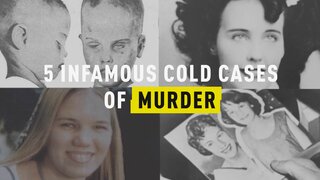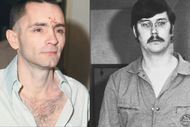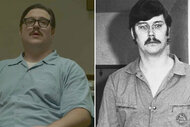Create a free profile to get unlimited access to exclusive videos, breaking news, sweepstakes, and more!
Myths And Facts About The Black Dahlia Murder
The gruesome murder of Elizabeth Short — dubbed "The Black Dahlia" by the media — has inspired speculation for decades. At Crimecon in New Orleans, California criminal justice scholar Anne Redding explored the notorious murder.

“Sometimes the dragon wins.”
That’s how Anne Redding summed up the 1947 murder of Elizabeth Short, otherwise known as the Black Dahlia.
“As much as we desperately want this case to be solved, it is not solved, and probably won’t ever be,” she said Friday at Crimecon in New Orleans.
Redding, an associate professor and department chair of the School of Justice Studies at Santa Barbara City College, has spent 30 years studying the murder of the 22-year-old Short, whose body was found in a vacant Los Angeles lot, badly beaten, mutilated and cut in half at the waist.
The grisly nature of her death sparked widespread media coverage at the time, and resulted in numerous books, movies, documentaries and podcasts over the ensuing 75 years, each of which offered theories on the identity of the killer. However, Redding cautioned against buying into any of them.
“Some have made a cottage industry of claiming to solve the case. I do not believe that they have,” she said. “Today is not going to be a whodunit. The LAPD considers this to be an unsolved cold case and so do I.”
During her presentation, Redding instead focused on a victimology of Short — trying to explain why the killer chose her, or what made her vulnerable to an attack.
In Short’s case, Redding pointed to her history of childhood sickness, her father’s abandonment of the family, and the death of her fiancé during World War II. The cumulation of these experience caused Short to suffer from attachment issues, depression, stress, insecurity, anxiety and emotional and behavioral issues. By the time of her death, Short was a “high-risk victim in a high-risk situation,” according to Redding.
“She was alone, it was late at night, she was homeless with little to no money,” Redding continued. “She was an attractive young woman and well-dressed, but a compulsive liar, known to approach strangers for favors. And she was dangerously trusting and that’s probably the reason she died.”
Redding suspects Short was the victim of a “lust murder,” defined as a sexually motivated killing usually involving mutilating attacks to the breasts, groin and/or rectum, often post-mortem.” The killer likely suffered from the “absolute most depraved of all psycho-sexual personalities,” she said.
Redding pointed to an interview with former FBI agent and criminal profiler John Douglas, who said Short was likely a victim of opportunity, and that the killer projected blame on her, believing she had to be punished for some reason. After the crime, Douglas said he wouldn’t have been surprised if the killer suffered a major emotional disintegration, which, if it was severe enough, would have kept him from committing crimes as heinous as Short's murder. It is possible the killer suffered a nervous breakdown or institutionalization — or even committed suicide — after Short’s death, Douglas believed.
Throughout her discussion, Redding sought to dispel many myths that have surrounded the Black Dahlia case: That Short was promiscuous, that she was a prostitute or aspiring starlet seeking fame. None of these things were true, she said.
“What have I learned in my 30-plus years researching this case, is there are an awful lot of rabbit holes to go down — and I have headfirst dove into every one,” she said. “If you want to avoid doing that yourself, I encourage you to disregard theories that depend upon vast LAPD conspiracies or require you to suspend disbelief.”



























